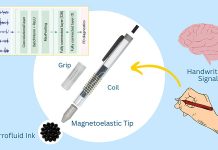
Epidemiological evidence linking diet, one of the most important modifiable lifestyle factors, and risk of Alzheimer’s disease (AD) is rapidly increasing.
However, there is little or no evidence for a direct association between dietary nutrients and brain biomarkers of AD.
In a recent study, researchers found nutrient patterns linked to major brain AD biomarkers in the brain.
They tested 52 healthy individuals who were about 50 years old. None of the participants were diabetics, smokers, or met criteria for obesity.
Dietary intake of 35 nutrients associated with cognitive function and AD was assessed using the Harvard/Willet Food Frequency Questionnaire.
The team found five nutrient patterns:
NP1 was characterized by most B-vitamins and several minerals [VitB and Minerals]; NP2 by monounsaturated and polyunsaturated fats, including ω-3 and ω-6 PUFA, and vitamin E [VitE and PUFA];
NP3 by vitamin A, vitamin C, carotenoids and dietary fibers [Anti-oxidants and Fibers]; NP4 by vitamin B12, vitamin D and zinc [VitB12 and D]; NP5 by saturated, trans-saturated fats, cholesterol and sodium [Fats].
The team showed that VitB12 and D, VitE and PUFA, Anti-oxidants and Fibers were linked to less AD biomarkers in the brain, while fats were linked to more AD biomarkers.
The identified ‘AD-protective’ nutrient combination was linked to higher intake of fresh fruit and vegetables, whole grains, fish and low-fat dairies, and lower intake of sweets, fried potatoes, high-fat dairies, processed meat and butter.
The findings suggest that dietary interventions may play a role in the prevention of AD by modulating AD-risk through its effects on Aβ and associated neuronal impairment.
For more information about foods and Alzheimer’s disease, please check this video:
If you care about Alzheimer’s disease, please read studies about new light treatment that may slow down Alzheimer’s disease, and a new therapy for Alzheimer’s disease, and results showing this antibiotic drug may effectively treat common dementia.
The study is published in The Journal of Nutrition, Health and Aging and was conducted by V Berti et al.
Copyright © 2022 Knowridge Science Report. All rights reserved.



